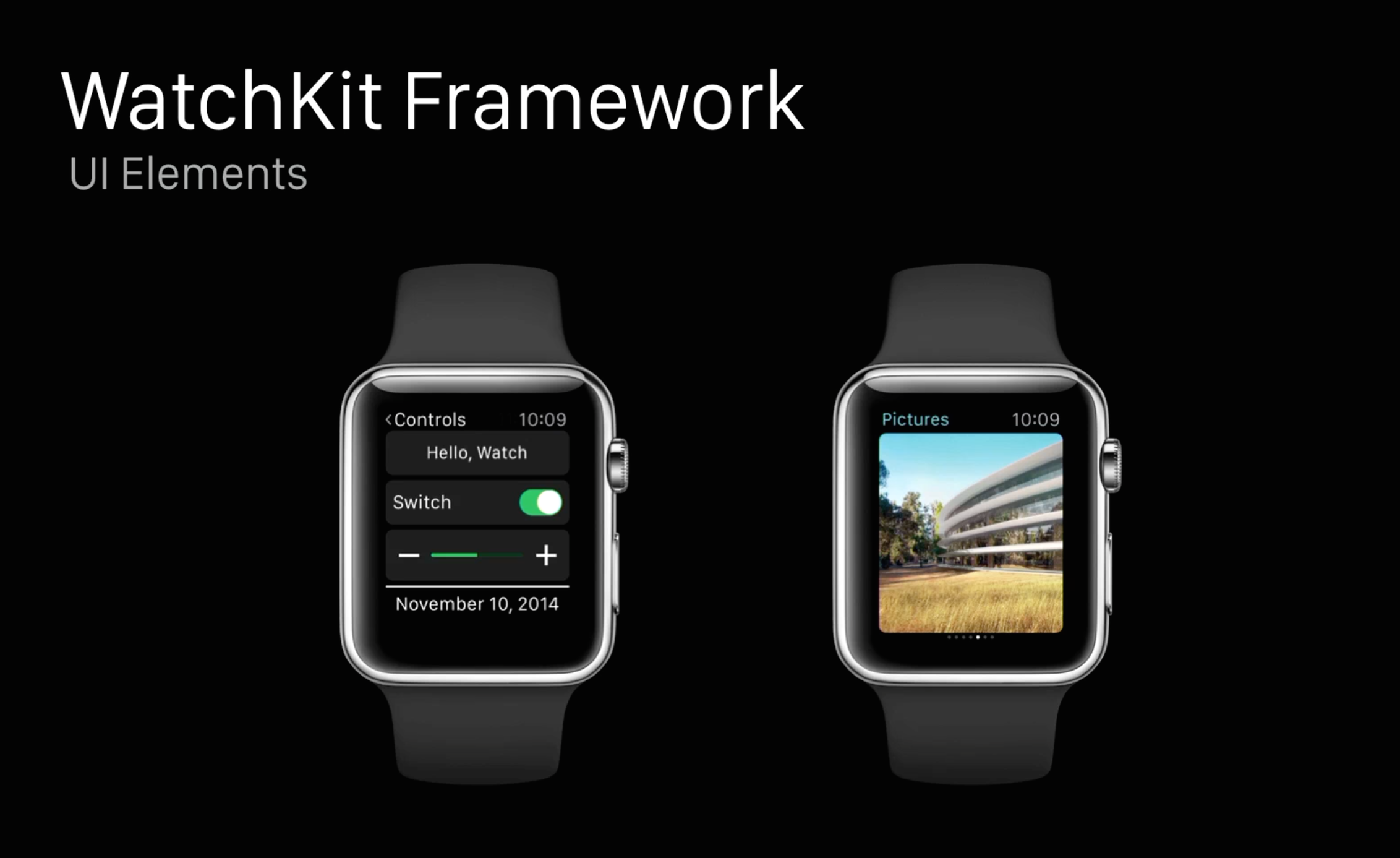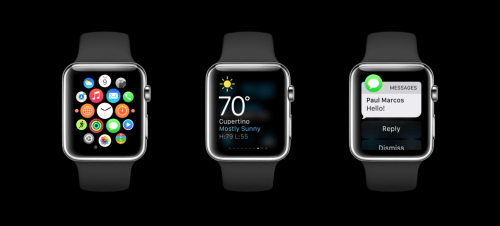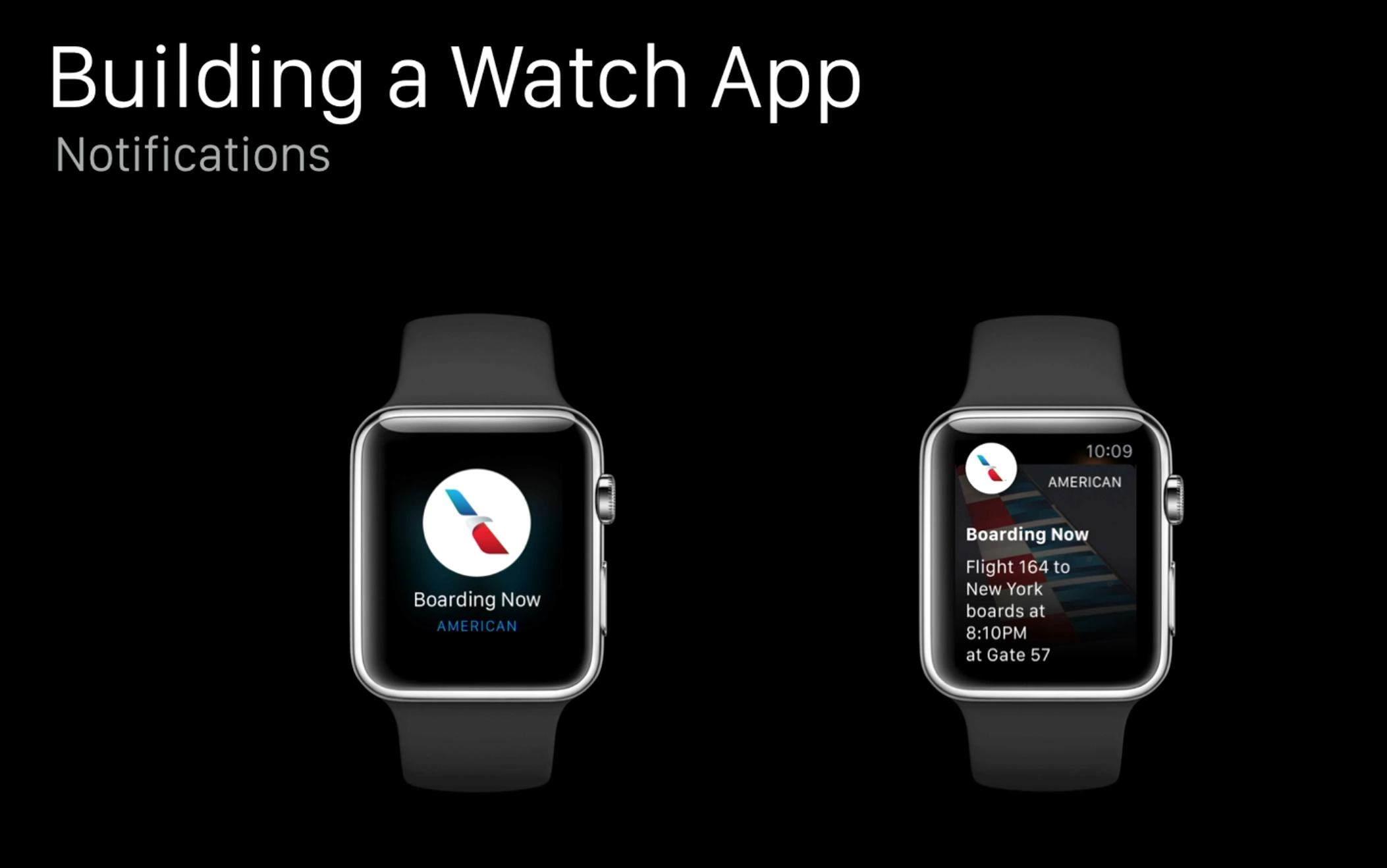 WatchKit a fost lansat in cursul acestei seri de catre compania Apple impreuna cu iOS 8.2 in ideea de a le oferi dezvoltatorilor de aplicatii posibilitatea de a crea titluri pentru Apple Watch pana in momentul lansarii sale oficiale pe piata. Conform documentatiei oferite de catre Apple pentru dezvoltatorii de aplicatii, Apple Watch va trebui conectat permanent la un iPhone pentru a putea rula aplicatii, acestea folosind hardware-ul din iPhone pentru a fi citite rulate, informatiile din ele fiind doar transpuse pe ecranul Apple Watch folosind o conexiune Bluetooth.
WatchKit a fost lansat in cursul acestei seri de catre compania Apple impreuna cu iOS 8.2 in ideea de a le oferi dezvoltatorilor de aplicatii posibilitatea de a crea titluri pentru Apple Watch pana in momentul lansarii sale oficiale pe piata. Conform documentatiei oferite de catre Apple pentru dezvoltatorii de aplicatii, Apple Watch va trebui conectat permanent la un iPhone pentru a putea rula aplicatii, acestea folosind hardware-ul din iPhone pentru a fi citite rulate, informatiile din ele fiind doar transpuse pe ecranul Apple Watch folosind o conexiune Bluetooth.
Avand in vedere aceasta constructie, dezvoltatorii de aplicatii sunt extrem de limitati in ceea ce priveste dezvoltarea de aplicatii, ei fiind nevoiti sa foloseasca doar teme concepute de catre Apple, acestea putand fi usor modificate. Apple a spus de la bun inceput ca un iPhone va compila intreaga aplicatie pentru ca ea sa fie afisata pe Apple Watch, deci ceasurile nu vor putea functiona de unele singure in nicio conditie pentru ca nu au hardware suficient de puternic pentru a rula aplicatiile special gandite pentru ele. Apple Watch foloseste atat procesorul cat si placa grafica a unui iPhone pentru a rula inclusiv notificarile, hardware-ul terminalelor fiind necesar pentru orice operatiune.
Pentru a nu avea nevoie de foarte multa putere de procesare, Apple impune anumite template-uri care trebuie utilizate pentru aplicatii, acestea fiind necesare si pentru glances, ele nepermitand interactiunea cu utilizatorul, chiar daca sunt afisate pe ecran pana la inchidere. Aceste glance-uri pot fi folosite pentru a redirectiona utilizatorul catre o aplicatie, sau un meniu al ei, dar dincolo de atat functionalitatea este limitata. In ceea ce priveste notificarile, dezvoltatorii pot doar sa modifice background-ul unei notificari, template-urile lor fiind prestabilite de catre Apple, dezvoltatorii neavand foarte multe de facut pentru a isi face aplicatiile compatibile cu ele.
Desi Apple Watch va fi extrem de limitat in ceea ce priveste posibilitatea de a dezvolta aplicatii acum, Apple promite ca spre sfarsitul anului 2015 si probabil dupa lansarea iOS 9 va permite personalizarea aplicatiilor dupa placul dezvoltatorilor, deci acestia vor trebui sa aiba rabdare.























